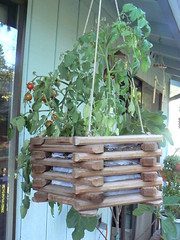Gardening has no end. There is no finish line. It is about a journey not a specific destination.
I think he left out a couple things that apply to both gardening and business, though:
- Gardens and businesses both need regular, careful attention. You'll have a much nicer garden if you spend a few minutes a day on it rather than several hours a couple times a month. Without regular attention, pests and problems fester, and what would have been a little job becomes a major one. The same is true of business, or work life more generally. File that one under Lessons I Learned from Bindweed.
- You can't nurture every plant carefully, but some are worth the extra trouble. If you have an entire garden full of fussy plants, they will drive you crazy. Time and energy are limited quantities. But some plants are so spectacular, they're worth some extra trouble to grow. I've found the same is often true of employees. File that one under Lessons I Learned from Citrus Trees.
- Not all plants are the same. Each species has unique needs, and sometimes individuals within a species differ from one another. A little observation to see what makes a particular specimen thrive can pay big dividends. Likewise, each person (employee, co-worker... whomever) in the workplace is a unique individual. Take the time to get to know each person and what makes him/her tick, and you'll work with others more successfully. File that under Lessons I Learned from Almost Every Plant I've Ever Grown.
Now put down that business book and pull some weeds!


